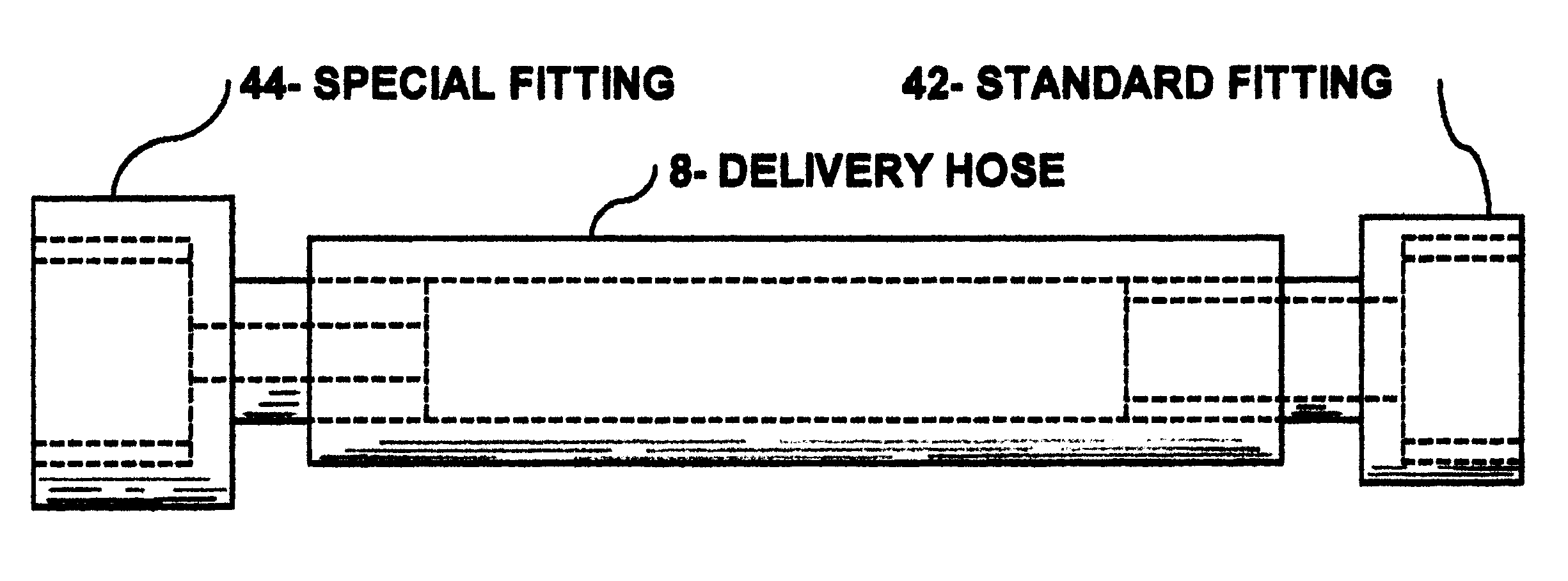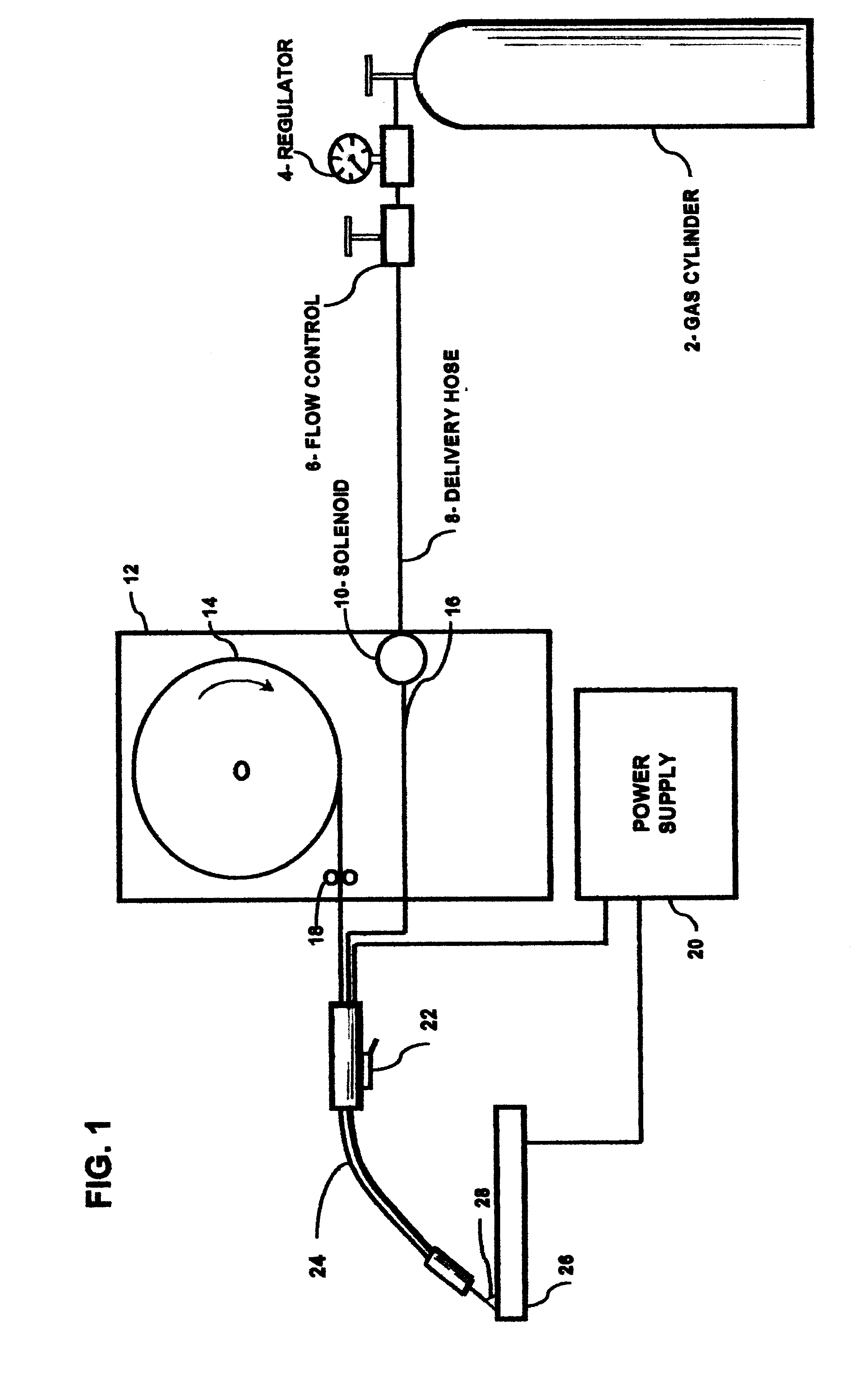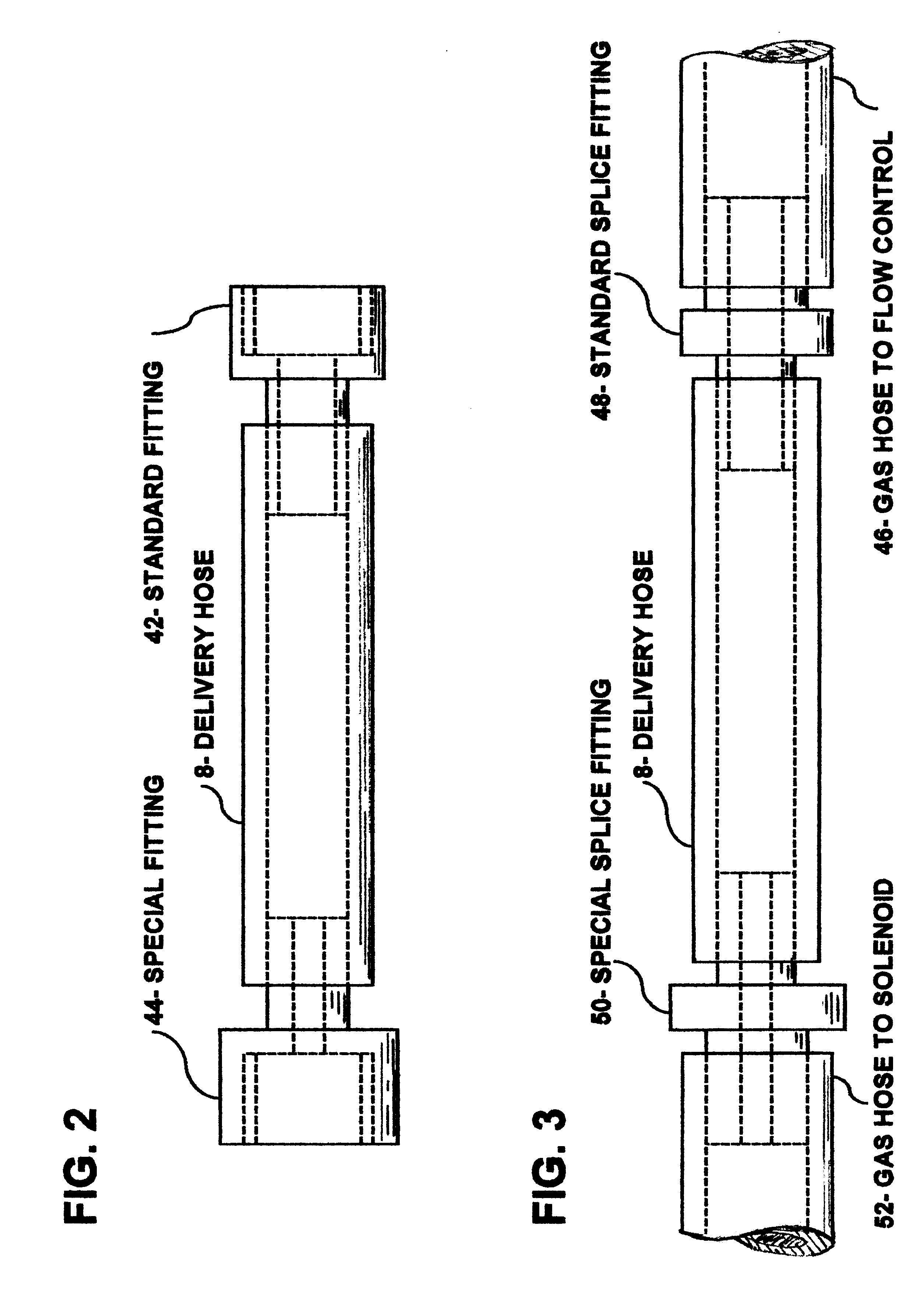Welding shielding gas saver device
a shielding gas and shielding technology, applied in the direction of shielding gas supply/evacuation devices, manufacturing tools, soldering apparatus, etc., can solve the problems of affecting the quality of the weld, wasting shielding gas, small for each occurrence, and affecting the weld. , to achieve the effect of reducing the risk of slipping and slipping, and reducing the welding quality
- Summary
- Abstract
- Description
- Claims
- Application Information
AI Technical Summary
Benefits of technology
Problems solved by technology
Method used
Image
Examples
embodiment
OPERATION-MAIN EMBODIMENT
Referring to FIG. 1. When welding is initiated, usually by closing the torch switch 22, the gas solenoid 10 is opened. Shielding gas flows from the cylinder 2, through the regulator 4, to flow control device 6, through the flexible shielding gas delivery hose 8, through the open solenoid 10, through the welding torch 24. The pressure in the shielding gas delivery hose 8 at the solenoid end is established by the restriction created by the flow control device 6 and the pressure drop in the hose and fittings caused by the flow of shielding gas. When welding is stopped, the solenoid 10 is closed; however shielding gas continues to flow into the gas delivery hose 8 until the pressure raises to the fixed output level of the regulator 4, which is commonly 25, 30, 50, or 80 psig. When welding is restarted, the excess gas pressure in the gas delivery hose 8 over that needed to produce the desired shielding gas flow rate is rapidly reduced to that governed by the flow...
PUM
| Property | Measurement | Unit |
|---|---|---|
| length | aaaaa | aaaaa |
| internal diameter | aaaaa | aaaaa |
| diameter | aaaaa | aaaaa |
Abstract
Description
Claims
Application Information
 Login to View More
Login to View More - R&D
- Intellectual Property
- Life Sciences
- Materials
- Tech Scout
- Unparalleled Data Quality
- Higher Quality Content
- 60% Fewer Hallucinations
Browse by: Latest US Patents, China's latest patents, Technical Efficacy Thesaurus, Application Domain, Technology Topic, Popular Technical Reports.
© 2025 PatSnap. All rights reserved.Legal|Privacy policy|Modern Slavery Act Transparency Statement|Sitemap|About US| Contact US: help@patsnap.com



